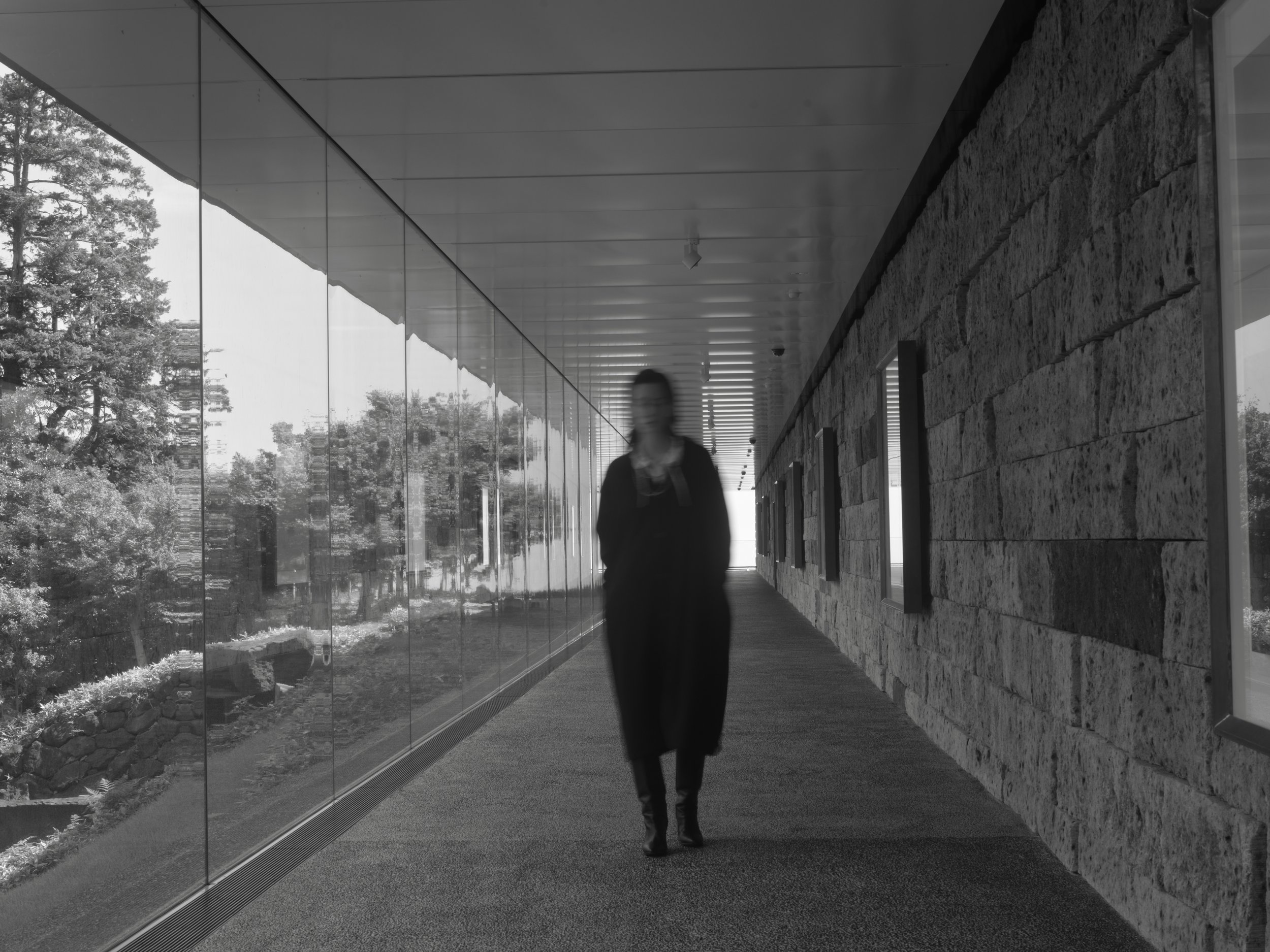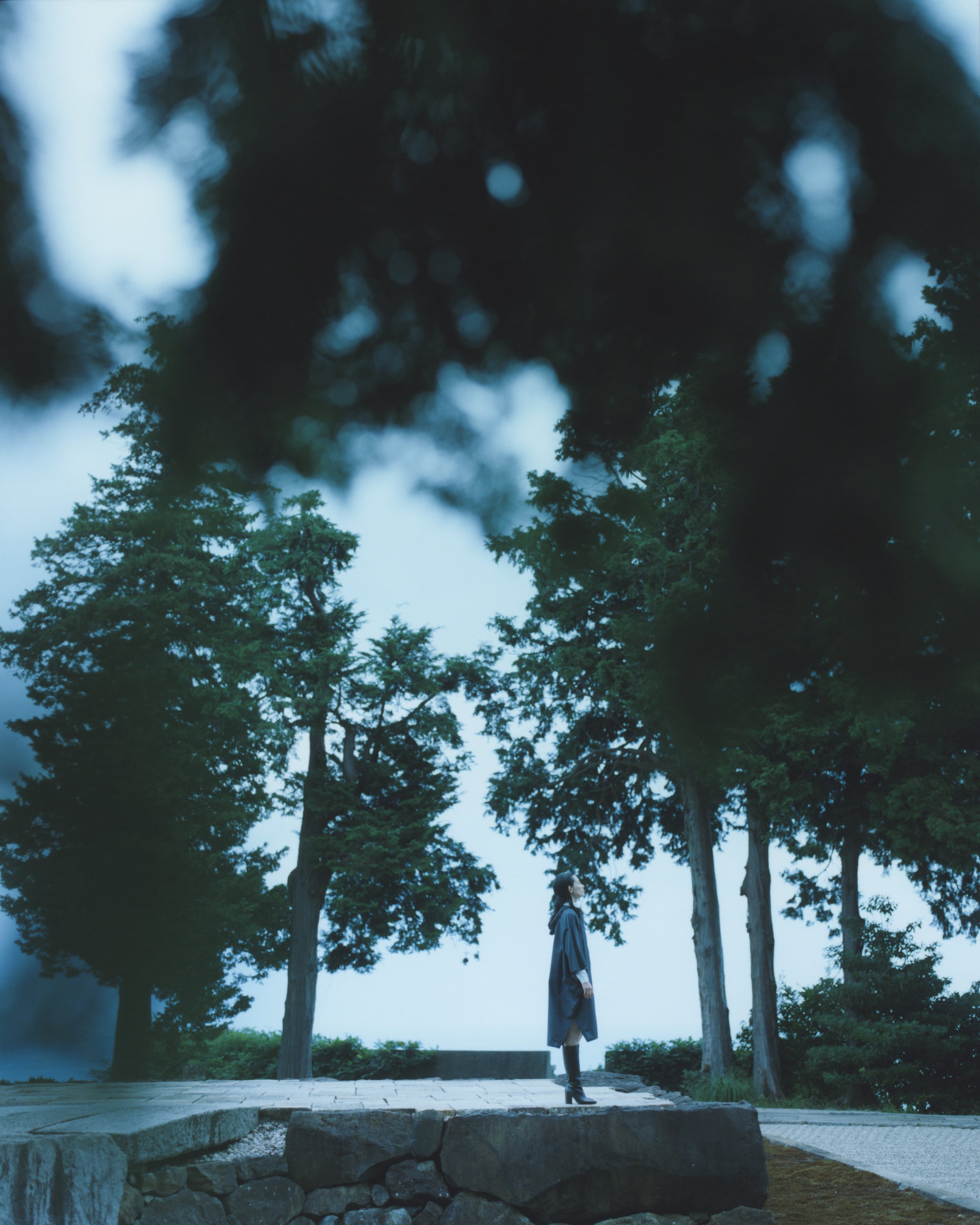journal vol.009 origins of art and humanity
The Enoshima Observatory at the Odawara Cultural Foundation invites visitors to the origins of art.
After 20 years of planning, this cultural facility opened in October 2017 on land that was once an orange grove field in Enoshima, Odawara City. It was designed by the internationally renowned contemporary artist Hiroshi Sugimoto. With the Hakone mountains behind it and breathtaking views of Sagami Bay in front, visitors can fully enjoy the beauty of nature in all seasons.
The facility features various spaces, including gallery halls, an outdoor stage, and a tea house, creating a special space where landscape and art come together to captivate visitors. Explore the highlights of this grand landscape wrapped in clear sky blue air with mizuiro ind.
One of the representative buildings at the Enoshima Observatory is the "Summer Solstice Light Worship 100-Meter Gallery." It’s designed so that the sunlight coming up from the sea on the morning of the summer solstice shines in a straight line. The walls are covered in Oya stone, and on the opposite side, 37 glass panels stand on their own without any column. Inside the gallery, you'll find works by Hiroshi Sugimoto on display.
The "Stone Stage," designed based on the dimensions of the Noh stage, uses many boulders that were unearthed during ground preparation. At the four corners, there are huge stones excavated from the Edo Castle site, and the stone bridge mounted with Takine stone from Kawauchi Village in Fukushima Prefecture.
This bridge is aligned with the axis of the sunrise rising from Sagami Bay on the Vernal and autumnal equinoxes. It was built with the idea "the performance begins in the twilight before dawn and ends as the actors bask in the morning sun when they return to the afterlife."
The triangular stage called "Sankakuzuka," facing the sea, has its peak towards the direction of the sun at noon on the Vernal and autumnal equinoxes.
The tea house "Uchoten," inspired by Sen no Rikyu's "Taian", measures just two tatami mats. Its walls are made of simple earthen plaster, and the roof features reclaimed tin from a former orange grove shed, giving it a modest yet rich meaning. Like its name, the sound of rain falling from above fills this space, creating a unique tranquility that sets it apart from other buildings.
At the entrance, a heavy stone torii modeled after a significant cultural property in Kodate, Yamagata Prefecture, stands tall. The stepping stones are made from the lid of an ancient tomb, adding to the historical weight of the details that deepen the ambience of this space.
The "Optical Glass Stage" spreads out along the axis of the winter solstice. The optical glass laid over the cypress beams sparkles brilliantly in the sunlight that streams in on the morning of the winter solstice. The stage itself has a grandeur reminiscent of Kyoto's Kiyomizu-dera Temple and the Chionji Temple.
The seating area is modeled after ancient Roman amphitheaters, making it look like the glass stage is floating on water. This enchanting scene, harmonized with Sagami Bay, takes visitors to another fantasy.
Next to it stands the "Winter Solstice Light Tunnel," about 70 meters long, designed to align with the sunrise on the winter solstice. The winter solstice marks the end of the year and the beginning of renewal. It has been a symbol of death and reborn since antiquity, marking when humanity began to notice the sun's cycle.This facility was conceived to revive those "ancient memories."
On winter solstice mornings, light from the rising sun over Sagami Bay pierces the tunnel, illuminating the huge stones.
This glorious cultural facility is filled with artistic treasures that reflect Japan's history. The expansive grounds still have areas under development, so there’s plenty of room for future evolution.
After exploring the site,Would you like to have a relaxing time at the open terrace, where you can enjoy drinks made from fruits harvested at "Sweet Orange Mountain "? It’s a great way to savor nature’s gift while taking a moment to unwind.
Odawara Cultural Foundation, Enoshima Observatory:
362-1 Enoshima, Odawara City, Kanagawa Prefecture, 250-0025
https://www.odawara-af.com/
Reservations required via the official website.
STAFF
photo : Sodai Yokoyama
hair & make-up : Yoko Hirakawa(mods hair)
model : UNI
edit & text : Masamichi Hayashi(SARUTA9), Misaki Imamura























